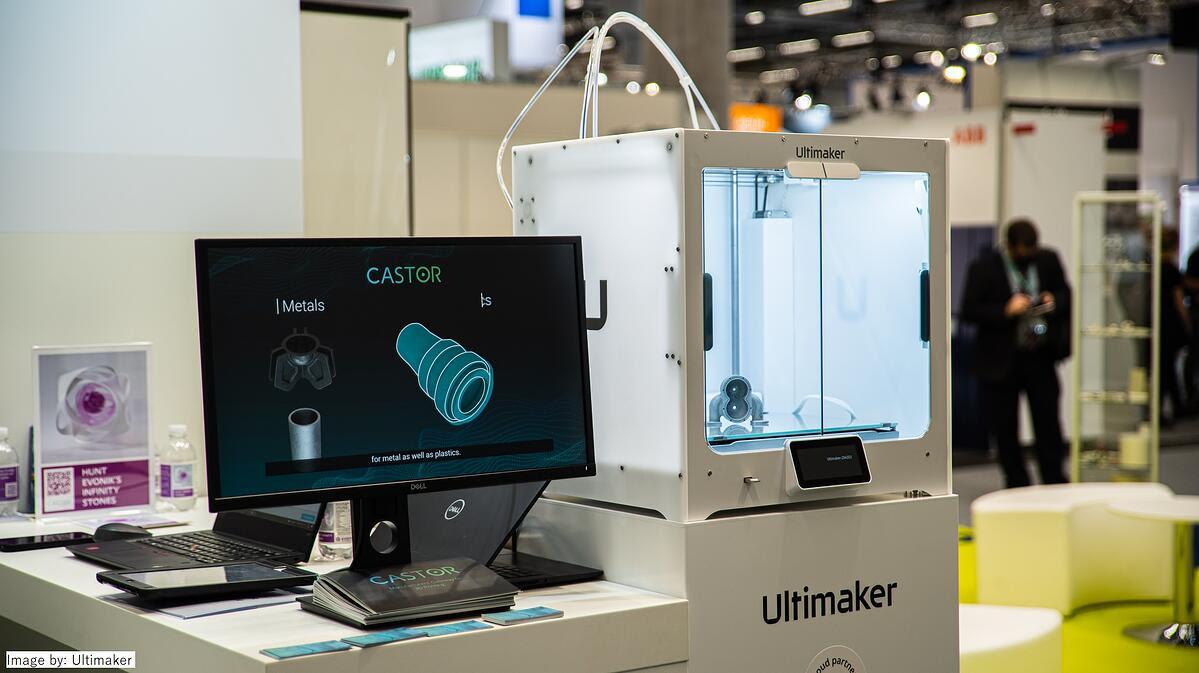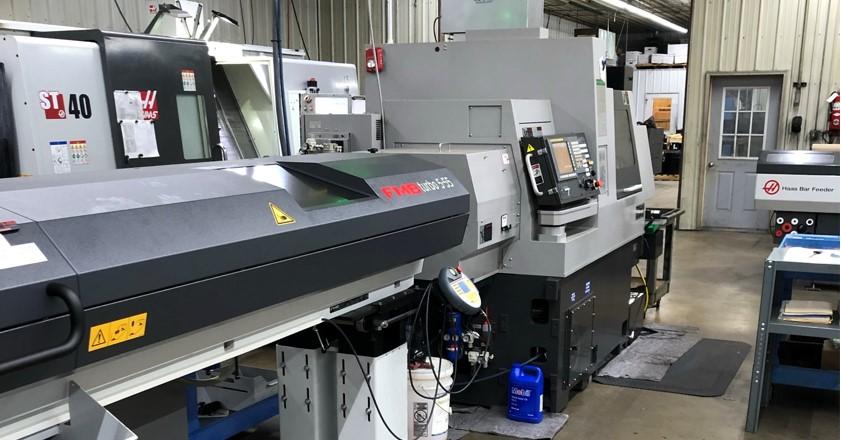
We’ll take care of some business first in today’s 3D Printing News Briefs, as Sigma Labs has promoted Jacob Brunsberg to the President and COO and one of CORE Industrial’s portfolio companies acquired another manufacturing company. Ultimaker and CASTOR announced an integration, and Dassault Systèmes announced a very interesting new fab lab coming to Haiti. Verizon is supporting innovation and research at Penn State and Caltech, and finally, a maker 3D printed housings to convert vintage camera lenses into cinema lenses.
Sigma Labs Promotes Senior VP to President & COO
Quality monitoring software developer Sigma Labs (NASDAQ: SGLB) announced that it has promoted Jacob Brunsberg to President and Chief Operating Officer, reporting to CEO Mark Ruport. Brunsberg joined Sigma Labs in September of 2021, leading the company’s product management and marketing resources and strategic relationships; previously, he was a P&L leader for GE’s Binder Jet Technology unit. As President and COO, he will oversee strategic initiatives to speed up the company’s growth and performance, including its transition to a software-only offering and addition of a subscription pricing model, and expand its OEM and partner ecosystem.
“I am humbled and excited to accept the new role and responsibility. I came to Sigma Labs with a passion for industrializing additive manufacturing and am honored to be able to lead and serve a team with this level of talent, potential, and technology,” Brunsberg said. “Our mission is to accelerate the adoption of additive manufacturing by setting the standard for in-situ quality monitoring and analytics. With customer success at the forefront, we will practice radical collaboration with the goal of driving costs out of the additive process chain, ensuring reliability and repeatability, and delivering a standardized approach to quality across the entire additive manufacturing landscape.”
CORE Industrial Portfolio Company Acquires Haven Manufacturing
CGI Automated Manufacturing, a portfolio company of CORE Industrial Partners, has acquired full-service engineered components contract manufacturer Haven Manufacturing, making it the fourth add-on acquisition to CORE’s CGI platform, launched in August. Founded in 1966, Haven operates two facilities, one in Indiana and one in Michigan, and, according to CGI Chairman TJ Chung, is “strategically located” to serve important medical device and equipment manufacturers in those areas. With ISO 13485, ISO 9001, and ISO 17025 certifications, as well as being ITAR-compliant and FDA-register, Haven specializes in components for medical equipment and devices with its suite of manufacturing services and metrology division.
“My partners and I believe in the fundamental element of teamwork, with pride and respect for our employees and customers.We believe the quality of the entire team and its involvement in problem-solving has been, and continues to be, the crucial component to our success,” said Len Feddema, President of Haven Manufacturing. “In collaboration with CGI and CORE, we’re excited to expand beyond Haven to even better serve our valued customers.”
Ultimaker and CASTOR Announce Integration
Software company CASTOR and 3D printer manufacturer Ultimaker have partnered up to launch an integration between the Ultimaker Digital Factory and CASTOR’s part screening software. The integration makes it possible for users to scan all their parts at once, estimate how printable they are with an Ultimaker system, calculate lead time and costs, and directly produce the parts with the Ultimaker Digital Factory. You can access CASTOR on Ultimaker’s Digital Factory Marketplace here.
“This is great news for Ultimaker printers’ users, which now have a tool to help them find new business cases and discover opportunities to save costs with their existing hardware. We are proud to have developed the capabilities which allow us to integrate CASTOR to leading AM companies and workflow software, and we look forward to more collaborations that will help streamline the utilization of 3D printing benefits,” said Omer Blaier, Co-Founder & CEO of CASTOR.

Self-Replicating Fab Lab in Haiti by Dassault & Fab Foundation
A new type of press conference at #3dxw22 speaking with @FabFndn Sherry Lassiter @suchitjain @Paul Altidor #Haiti #FabLab2.0 #3DEXPERIENCELab #SOLIDWORKS adds to Rwanda Bhutan Nepal & Chili #FabLab People Can Make Things On Their Own with @Dassault3DS pic.twitter.com/NyR1ExfMqa
— Marie Planchard (@marieplanchard1) February 9, 2022
At the recent 3DEXPERIENCE World 2022 virtual event, Dassault Systèmes, and The Fab Foundation, together with Paul Altidor, former Ambassador of Haiti to the US, announced a fab lab that’s planned for Jérémie, Haiti. Aimed at stimulating and increasing digital fabrication skills for local makers, Fab Lab Jérémie is the fifth fab lab set up by Dassault and the Fab Foundation, with others located in Bhutan, Chile, Nepal, and Rwanda. But what’s different about this one is the fact that it’s the first in a series of ‘self-replicating’ fab labs capable of making machines that can create the components, machines, and tools needed to set up and operate another functional fab lab.
“We’ve partnered with MIT’s Center for Bits & Atoms on a project called ‘Machines that Make,’ and can now produce the machines for a fab lab, in a fab lab, for about 1/10th the price of off-the-shelf technology. Haiti will pilot the first fab lab made in a fab lab, enabling the Jérémie community to build new economic opportunity locally, and to scale opportunity across the country,” said Sherry Lassiter, President and CEO of The Fab Foundation.
Verizon Supporting Innovation & Research at Two Universities
In an effort to support innovation and research in improving manufacturing, as well as partner with universities, enterprises, national labs, government/military, and startups to explore how 5G can disrupt and transform industries, Verizon is bringing its 5G Ultra Wideband to Penn State’s Innovation Park and the Caltech Centre for Autonomous Systems and Technologies (CAST). Engineers at CAST will look at how AI, 5G Ultra Wideband, and mobile edge computing can help smart drones detect, interpret, and respond to weather changes in real time, while researchers at Penn State will explore how 5G can enhance manufacturing, leading to new R&D partnerships to improve workforce development and commercial applications, as well as education about and access to 3D printing.
“We are excited to partner with Verizon to bring advanced digital connectivity to Penn State and enable new innovations in digital connectivity. Having 5G capabilities in CIMP-3D creates unique opportunities to drive the use and adoption of additive manufacturing as we embark on the fourth industrial revolution, or Industry 4.0,” said Tim Simpson, Paul Morrow professor of engineering design and manufacturing and co-director of the Centre for Innovation Materials Processing through Direct Digital Deposition (CIMP-3D).
3D Printed Housings Convert Photo Lenses into Video Lenses
Finally, vintage photography lenses, while attractive and useful for producing footage that’s difficult to shoot with modern glass, aren’t really meant for videos, as they need to be operated by hand, with the focus and aperture rings moved manually instead of with a gimbal motor; plus, there’s usually a lot of post-processing involved. But maker Edward Park used Fusion 360 to design some 3D printable housings that can be used to easily convert vintage photo lenses into DIY cine lenses, and made the files available to download for free on Thingiverse. Only six 3D printed parts and some grub screws are needed for the project, and the housings can be attached to the lens exterior without any modifications.
“This lens housing has an outer diameter of 114mm and the focal gear is also applied with a 0.8M standard gear pitch applied to cinema lenses. (Outer diameter 114mm / 141T) The larger the outer diameter of the lens, the more burdensome, but the larger the outer diameter of the focus ring, the finer the focus can be adjusted. This is useful when using an auxiliary device dedicated to other cinema lenses,” Park wrote about his design.
Stay up-to-date on all the latest news from the 3D printing industry and recieve information and offers from thrid party vendors.
Tagged with: 3d printed housing • 3d printing business news • 3d printing executives • 3DEXPERIENCE World • 5G • acquisition • Caltech • CASTOR • cgi • CIMP-3D • CORE Industrial Partners • Dassault Systèmes • digital fabrication • Fab Foundation • Fab Lab • haiti • Haven Manufacturing • integration • lenses • mit center for bits and atoms • Penn State • photography • promotion • Sigma Labs • thingiverse • ultimaker • verizonPlease enable JavaScript to view the comments powered by Disqus.